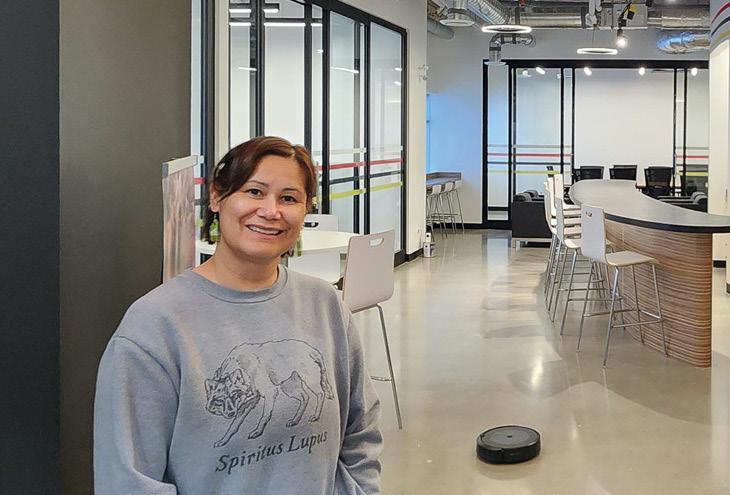The newly established Indigenous Dental Association of Canada (IDAC) is one of the most prominent Indigenous-led initiatives addressing inequities in Canada’s oral health delivery. A 2017 report from the country’s auditor general found that First Nations and Inuit populations had nearly twice the rate of dental disease as non-Indigenous Canadians, partly due to geographical barriers, fewer dentist visits, and less access to nutritious food.
In response, the IDAC aims to create a network of Indigenous dental professionals from across the country taking an approach to oral health rooted in traditional ways of knowing. “Our priority is to create a culturally safe community for Indigenous oral health providers, Indigenous students interested in the oral health profession, and Indigenous communities,” says IDAC founder Dr. Sheri McKinstry.
To realize these goals IDAC is working to provide student mentorship and support, overcome institutional barriers, and expand access to dentistry in remote communities. Its new training center has specialized ventilation for smudging, a sound booth for multimedia, a booth for kitchen table talks, and gathering areas for research and mentoring.
Growing up in Manitoba’s Sagkeeng First Nation, Dr. McKinstry had a personal traumatic experience with dentists, and as a high school dropout, she followed an unconventional path to dentistry. Before completing her degree and becoming an assistant professor at the University of Saskatchewan (USask) College of Dentistry, she provided dental care in Indigenous communities for over a decade.
Also a USask assistant professor of dentistry, Dr. Trish Goulet of the Peter Ballantyne Cree Nation is involved in a new project to develop accessible oral health information in the Cree and Dene languages. This effort builds on established relationships with communities served by the college’s outreach dental clinics.
“Through consultation with community members and organizations, we will co-create oral health resources based on research findings and Indigenous ways of knowing,” says Dr. Goulet. “There is significant potential for this project to have a positive impact on the health outcomes of Indigenous peoples.”
Growing up in northern Saskatchewan, Dr. Goulet regularly heard stories of Indigenous people not receiving a proper anaesthetic, then being held down and having treatment forced on them. To help rebuild trust in the system, she’s been involved in another project with colleague Dr. Amrinderbir Singh to learn directly from Indigenous people what an ideal dental care experience would look like.
With an aging workforce and growing demand for dental care, emerging initiatives are encouraging Indigenous students to consider careers in this important work. A new bursary from the National Dental Assisting Examining Board was recently announced for Indigenous students in post-secondary dental assisting programs.
In addition, an innovative dental therapy degree program is launching this year at USask in collaboration with colleges and organizations in the province. With a focus on providing Indigenous students opportunities to build dental careers in their communities, the program promises a culturally appropriate learning environment with studies available at three locations throughout the province.
Students will have access to “state of the science” haptic virtual simulators, similar to those used in training pilots. Dental therapists are trained to perform preventive services and restorative treatments such as fillings and extractions.
“We are catering the program to create the ideal workforce to serve the Indigenous peoples and communities,” says USask College of Dentistry Dean Doug Brothwell. “We are helping to build capacity within these northern communities where local people get trained as professionals.”













